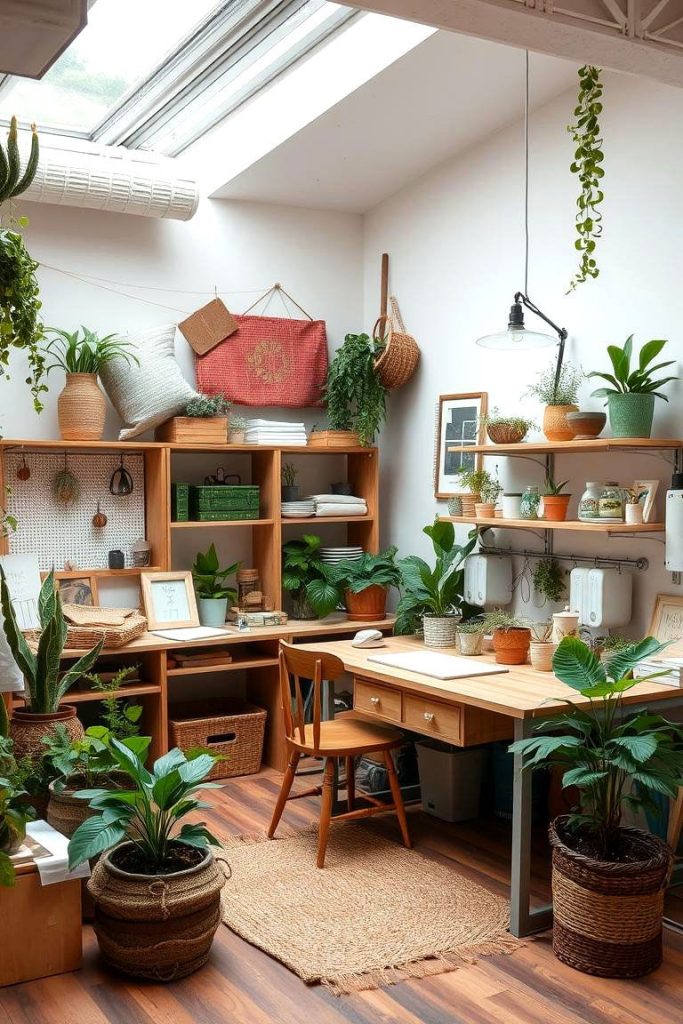Spatial Organization Crafting Functional Minimalist Spaces

Exploring the Essence of Space
In today’s fast-paced world, achieving a sense of calm and clarity in our living environments is more essential than ever. The concept of minimalism, rooted in simplicity and functionality, has gained momentum as a viable solution for those seeking to declutter their lives. Central to this movement is the principle of spatial organization, which emphasizes the thoughtful arrangement of objects and spaces to foster both aesthetic appeal and practical use.
The Role of Space in Minimalism
Understanding spatial organization can profoundly impact how we interact with our surroundings. Consider the following aspects:
- Enhanced functionality: Clever arrangements can make even small spaces work harder.
- Aesthetic harmony: Organized spaces create a visually pleasing environment.
- Mental clarity: Reducing distractions fosters focus and peace.
As we delve deeper into the art of crafting functional minimalist spaces, prepare to discover the Top 5 essential strategies for optimizing your environment. Each approach will not only transform your space but also encourage a more mindful approach to living.
BOOST YOUR PRODUCTIVITY: Click here to enhance your to-do list
Top 5: The Importance of Spatial Organization in Creating Functional Minimalist Environments
In today’s fast-paced world, where material possessions often dominate our surroundings, the minimalist lifestyle shines brightly as a model of simplicity and purpose. At the very core of this lifestyle lies spatial organization—a powerful tool that enhances both form and function in minimalist spaces. This article explores the **top five reasons** why spatial organization is essential in creating functional minimalist environments, progressing from the least impactful to the most crucial. This journey unveils how organization transforms spaces from cluttered chaos into serene sanctuaries.

5. Enhanced Aesthetics
Aesthetics play an indispensable role in minimalist spaces, where simplicity does not equate to a lack of visual appeal. A well-organized environment creates a **visual harmony** that complements the minimalist ethos of “less is more.” Each item in a minimalist space is chosen and placed with intent, contributing to a clean and pleasing appearance that is both calming and invigorating.
Consider an art gallery; its strength lies not only in the artwork but how those pieces are displayed. Similarly, in a minimalist home, strategic placement of furniture and accessories creates a sense of balance and proportion, allowing each piece to breathe. This well-crafted design leads to an environment that is both functional and beautiful, exuding understated elegance and timelessness. Through thoughtful spatial organization, style and utility seamlessly coexist.
Example: The Role of Color and Form
Colors and shapes are essential tools in achieving aesthetic harmony. Neutral tones, often favored in minimalist spaces, emphasize natural light and open spaces, creating a backdrop that soothes and uplifts. The careful selection of furniture with clean lines further emphasizes simplicity and order, enhancing the room’s overall appearance and feel.
4. Increased Productivity
Spatial organization has a profound effect on productivity, creating an environment where focus and efficiency flourish. In a well-structured space, distractions are minimized, and important tasks can take center stage. This balance is crucial in our world of constant notifications and pressures.
Imagine a home office where unnecessary items are banished, leaving only tools of productivity. The desk is clear, facilitating quick access to essential supplies. Such organization paves the way for a workspace that promotes concentration and creativity. Furniture layout, visibility of materials, and ease of movement all contribute to an atmosphere where individuals can tackle tasks with increased vigor and reduced stress.
Example: The Power of Decluttering
Decluttering is a cornerstone of productivity in minimalist environments. By reducing excess items, individuals clear both physical and mental space, allowing for uninterrupted workflow. This strategy encourages decision-making and priority setting, actions that are vital for success in any venture.
3. Better Stress Management
Clutter and disarray can elevate stress levels, leading to feelings of overwhelm and anxiety. A minimalist space, organized with precision, conveys an aura of **calmness and serenity**, creating a refuge where one can rejuvenate.
Natural elements play a significant role in crafting these calming spaces. Introducing greenery, maximizing natural light, and using soft textures help weave a sanctuary that transcends mere aesthetics. The result is an environment that nurtures mental clarity and emotional balance, vital for stress reduction.
Designing Peaceful Spaces
Designing a relaxing minimalist environment involves setting boundaries for chaos. Adequate storage solutions allow items to be tucked away, reducing visual noise. These elements work together to create peaceful, organized settings where stress can dissolve and relaxation can take root.
2. Maximized Functionality
At the heart of minimalism lies functionality, which is intrinsically linked to spatial organization. Every piece of furniture, each storage solution, is carefully curated to serve a purpose without adding complexity. The goal is simple yet profound: to create spaces that enhance living through practicality.
Functionality extends beyond mere usability; it’s about recognizing the **purpose of the space** and organizing it to fulfill that purpose efficiently. Whether it’s a living room for social gatherings or a bedroom designed for restful sleep, spatial organization ensures each element serves its intended role. Incorporating multipurpose furniture and modular designs further elevates the practicality of a space, turning rooms into vital hubs of daily life.
Example: Multifunctional Spaces
In a minimalist home, a dining area might double as a workspace, or a sofa might convert into a guest bed. These clever integrations highlight how spatial organization can enhance adaptability without sacrificing style, allowing spaces to evolve with changing needs.
1. Promotion of Mindful Living
At the pinnacle of minimalist philosophy is the promotion of mindful living. Spatial organization encourages individuals to evaluate their possessions, fostering intentionality in lifestyle choices. This practice of consciously keeping what serves a purpose or brings joy leads to a profound transformation, both physically and mentally.
Decluttering a space often mirrors decluttering the mind, freeing up mental bandwidth and allowing room for personal growth. By prioritizing essential belongings and arranging them thoughtfully, individuals align their living environment with their core values and aspirations.
Example: Gratitude and Simplicity
Living mindfully through spatial organization nurtures gratitude. When spaces are unburdened by excess, life’s simple pleasures and necessities can be truly appreciated. This awareness not only simplifies life but enriches it, fostering contentment and peace.
In conclusion, the importance of spatial organization in creating functional minimalist environments cannot be overstated. By adopting these principles, one can create spaces that are not only visually appealing but also deeply enriching. It is a journey towards simplicity, functionality, and lasting well-being—a journey worth embarking on.
| Category | Description |
|---|---|
| Spatial Efficiency | In minimalistic environments, spatial efficiency is key. Every square inch is maximized through strategic layouts and multifunctional furniture, allowing for seamless movement and versatility. |
| Psychological Benefits | Minimalist spatial organization promotes tranquility and reduces cognitive overload. A decluttered space can lead to a decluttered mind, enhancing focus and mental clarity. |
| Sustainability | Minimalism inherently encourages sustainable living. By utilizing fewer resources and emphasizing quality over quantity, environments that prioritize spatial organization reduce environmental footprints. |
| Aesthetic Appeal | A well-organized spatial layout enhances aesthetic appeal. Simple lines and uncluttered spaces create welcoming environments that attract admiration and promote relaxation. |
DISCOVER MORE: Click here to enhance your study routine
Frequently Asked Questions about Spatial Organization in Functional Minimalist Environments
What is the core principle of a minimalist environment?
The core principle of a minimalist environment is to create spaces that are both aesthetically pleasing and highly functional by utilizing simple design elements and removing unnecessary items. This approach focuses on quality over quantity, ensuring each piece serves a purpose or brings joy, contributing to a harmonious living area.
How does spatial organization contribute to a functional minimalist space?
Spatial organization plays a crucial role in minimalist spaces by maximizing the efficiency and flow of the area. By strategically arranging furniture and decor items, homeowners can create an illusion of more space and promote an environment that encourages relaxation and productivity. Thoughtful spatial organization ensures that each section of the room is accessible and usable, aligning with the minimalist ethos of functional simplicity.
What common mistakes should be avoided in creating minimalist spaces?
One common mistake is going too extreme with minimalism, which can lead to spaces that feel barren or sterile. It’s important to incorporate personal touches that reflect the inhabitant’s personality without cluttering the area. Another pitfall is ignoring the importance of texture and color variation; these elements can add warmth and depth to a minimalist setting, preventing the space from feeling monotonous.
Can minimalism be applied to small spaces effectively?
Absolutely. In fact, minimalism can be particularly effective in smaller spaces. By focusing on essential items and eliminating clutter, small spaces can become more open and functional. Additionally, making use of vertical space and multi-functional furniture can maximize the utility of limited square footage, demonstrating that minimalism is not about the size of the space but rather about how effectively space is utilized.
Is it possible to maintain a minimalist lifestyle in a busy household?
Maintaining a minimalist lifestyle in a busy household requires intentional planning and regular organization. The key is to ensure that all family members are on board with the minimalist mindset and are committed to maintaining order. Regular decluttering sessions and establishing designated zones for specific activities can help manage and sustain a minimalist environment amid the hustle and bustle of daily life.
DISCOVER MORE: Click here for tips on creating your peaceful haven
Conclusion: The Role of Spatial Organization in Minimalist Environments
In our exploration of spatial organization’s significance in crafting functional minimalist spaces, we have uncovered several crucial insights. At the heart of minimalism lies a quest for simplicity and efficiency, wherein spatial organization plays a pivotal role in achieving these goals.
Key Takeaways
- Clarity and Order: An organized space eliminates unnecessary distractions, allowing for a clearer mind and enhanced focus. By strategically arranging elements, one can create an environment that fosters tranquility and productivity.
- Resource Optimization: Maximizing the utility of each space through thoughtful design reduces clutter and promotes sustainability, aligning with the core principles of minimalism.
- Personalization: A well-organized space reflects personal priorities and lifestyle, turning minimalism into a customized experience that meets individual needs and goals.
- Psychological Benefits: Living and working in a functional minimalist setting can lead to reduced stress and increased well-being, underscoring the mental health advantages of an orderly environment.
- Continual Improvement: Minimalist spaces require ongoing evaluation and refinement to maintain functionality and relevance. Adopting a mindset of continuous improvement ensures that the space evolves alongside personal growth and change.
Ultimately, the art of spatial organization is an essential component of minimalism. It is a practice that not only enhances physical spaces but also enriches one’s mental and emotional realms. As individuals seek out new ways to declutter and simplify their lives, the strategic organization of space stands as a beacon for achieving a harmonious and purposeful existence. For those willing to delve deeper, this topic offers a rich field for further exploration, full of potential to transform daily life through thoughtful design and consideration.
Related posts:
The Art of Letting Go: How Space Optimization Contributes to a Minimalist Lifestyle
Transforming Living Spaces: The Art of Creating Functional Environments with Minimalism
Efficient Organization: How Minimalism Can Transform Your Workspace
Sustainability and Minimalism: How to Reduce Waste with Optimized Spaces
Digital Minimalism: How to Organize Your Virtual Space to Increase Productivity
Organization of Cabinets: Strategies to Optimize Storage Spaces with a Minimalist Style

Linda Carter is a writer and organization expert specializing in minimalism and personal organization. With extensive experience helping individuals create clutter-free, functional spaces and adopt mindful habits, Linda shares her knowledge on our platform. Her goal is to empower readers with practical advice and strategies to simplify their lives, stay organized, and achieve a sense of calm and balance in their daily routines.